The 7 Chatbots Every Website Should Consider in 2025

A chatbot on your website means visitors don’t have to wait or guess where to find help. Someone’s always there to answer, even if it’s just a simple question. It’s a small change that makes your site feel much more better for both you and your customers.
A well-integrated chatbot does more than chat. It connects directly with your CRM, guides visitors through checkout, captures leads, and provides support 24/7 without adding extra load on your team.
The real challenge is choosing the right tool. Some ai chatbots are simple to install and start delivering results within hours. Others require heavy development and slow down your site. Picking the right fit can make the difference between a chatbot that drives revenue and one that frustrates visitors.
In this blog, we will list the 7 best chatbots for website integration in 2025. Each option is evaluated on setup speed, ease of integration, and ability to improve customer engagement across e-commerce, SaaS, and enterprise websites.
Adding a chatbot to your website in 2025 is no longer optional. It helps businesses provide instant, 24/7 customer support and boost engagement without increasing workload. Modern chatbots now connect directly with CRMs, capture leads, and guide users through checkout. YourGPT stands out for its AI-first no-code setup and omnichannel automation, while Intercom excels in lifecycle management for SaaS companies. ManyChat and Landbot focus on ecommerce and conversational funnels, and Zendesk, Freshchat, and Zoho SalesIQ bring advanced support tools for teams of all sizes.
Key Takeaway: Choose a chatbot that matches your website goals. Fast setup, CRM integration, AI accuracy, and scalability define the best chatbots for 2025.
Adding a chatbot to a website is easy. Ensuring that it delivers measurable value to both customers and the business requires more thought. The real difference lies in how effectively a chatbot understands context and adapts to user needs.
In 2025, website chatbots are expected to function as intelligent assistants rather than scripted responders. Customers want instant, accurate, and personalised answers. Businesses need systems that integrate into daily operations, reduce manual work, and generate actionable insights.
Here are the five capabilities every serious chatbot platform must include today:
They are baseline expectations. Choosing a chatbot that lacks them risks lost opportunities and dissatisfied customers. Businesses that invest in these capabilities will see both stronger customer relationships and measurable operational gains.
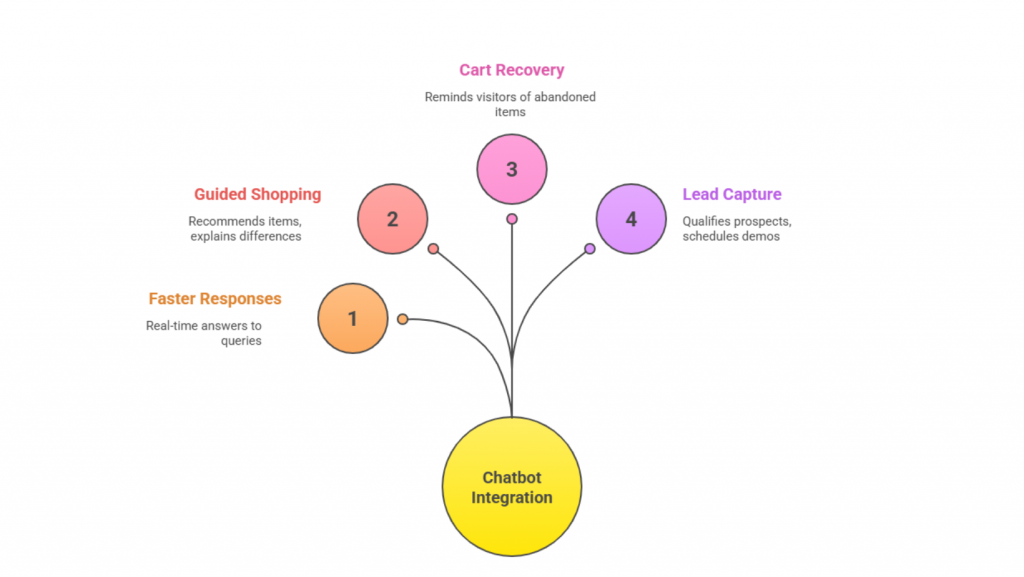
Every visitor who lands on a website is a potential customer, but most leave without taking action. The reasons are simple: unanswered questions, confusing navigation, or hesitation at checkout. A well-integrated chatbot addresses these gaps by stepping in at the right moment with support that keeps visitors engaged and moves them toward a decision.
Modern customers expect immediacy. If a page does not provide the answer they need, they often abandon the site. A chatbot changes this by offering real-time responses to common queries such as shipping details, return policies, or service availability. Quick answers prevent frustration and keep users engaged long enough to complete their journey.
In e-commerce, hesitation often happens when buyers are comparing products or deciding whether to commit. A chatbot can act as a digital sales assistant, recommending items based on browsing history, explaining product differences, and even applying discounts during checkout. By reducing uncertainty, it shortens the path to purchase and raises conversion rates.
Abandoned carts represent lost revenue for online stores. A chatbot can proactively remind visitors about the items they left behind and offer assistance if something caused them to hesitate. Even a small prompt like “Need help completing your order?” can recover sales that would otherwise disappear. Many retailers report measurable improvements in conversion by using this feature.
For SaaS and service-based businesses, a visitor’s interest may come after hours. Without a chatbot, those opportunities are missed. A chatbot can capture details, qualify prospects with a few simple questions, and even schedule demos automatically. This ensures that potential leads are never lost because a sales team is unavailable.
These functions go far beyond basic support. A chatbot can increase the speed of service, reduce friction in the buying process, recover lost revenue, and create new opportunities. When deployed effectively, it does more than improve engagement. It contributes directly to sales growth.
| Platform Name | Best For |
|---|---|
| YourGPT | Unified AI for support, sales, and ops with web, WhatsApp, Messenger, Telegram, LINE, and voice |
| Intercom | SaaS onboarding, lifecycle messaging, and helpdesk workflows |
| ManyChat | Social-first and ecommerce automation on Instagram, Messenger, WhatsApp, and web |
| Landbot | No-code funnels, lead capture, surveys, and structured conversational flows |
| Zendesk | Enterprise support with ticketing, knowledge base, and routing automation |
| Freshchat (Freshworks) | SMB-friendly live chat plus AI on web and messaging with quick setup |
| Zoho SalesIQ | Zoho stack users needing CRM-connected chat, visitor tracking, and lead scoring |
The chatbot market has advanced quickly. Businesses are no longer satisfied with basic automation.
They need platforms that integrate smoothly with websites, work across multiple channels, and show measurable impact on engagement and sales. Out of the many choices available, these platforms stand out in 2025 for combining ease of use with strong business outcomes.

YourGPT is an AI-first, all-in-one chatbot platform built to support customer service, sales, and business operations. It offers a no-code setup and powerful automation features that simplify adoption for small businesses while still providing the scalability required by large enterprises.
With its focus on ease of use and advanced AI capabilities, YourGPT helps companies improve customer support, boost sales, and streamline workflows in a single platform.

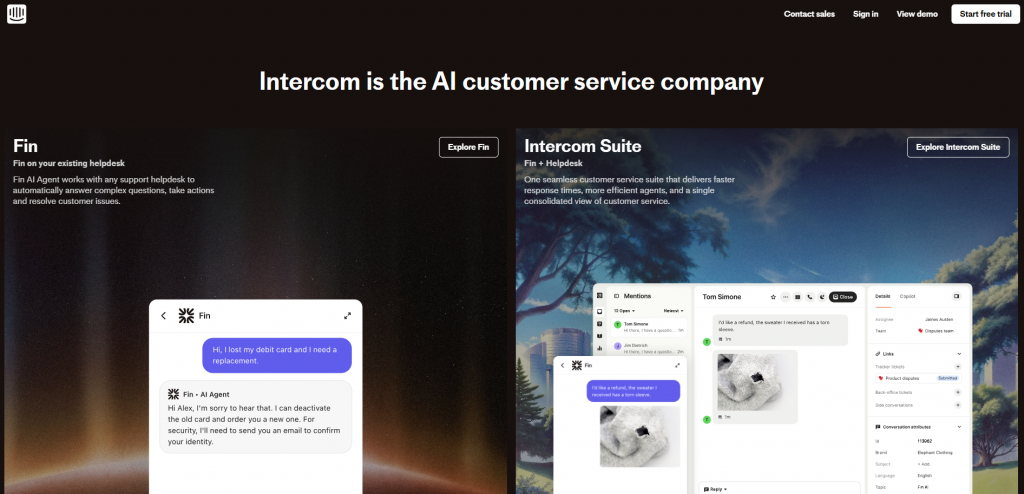
Intercom is a customer service platform widely used by SaaS and subscription-based companies. It is known for helping businesses strengthen relationships with customers through communication across different stages of the user journey, including onboarding and retention.


ManyChat started as a chatbot platform for social media channels like Messenger and Instagram but has expanded to include website integration. It remains a strong choice for ecommerce brands that want to connect marketing campaigns with real-time conversations.


Landbot is known for its visual flow builder that simplifies chatbot design. It is highly popular among businesses that need structured conversations, such as surveys, lead capture, or qualification forms.


Zendesk is a customer service suite trusted by enterprises worldwide. Its chatbot integrates directly into the Zendesk ecosystem, making it an excellent fit for businesses that manage high ticket volumes and want to streamline customer support.

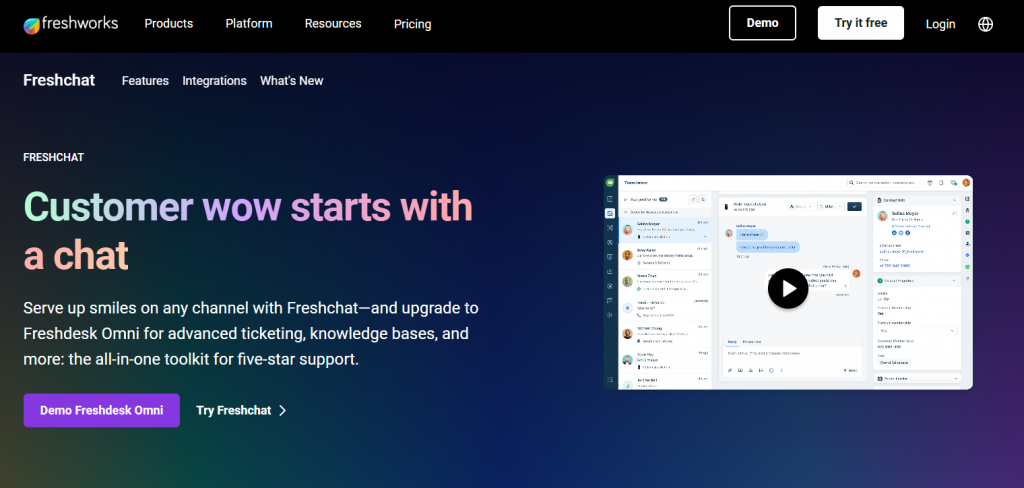
Freshchat combines live chat with AI-driven automation, offering a balance between human support and chatbot efficiency. It is designed for small and medium-sized businesses that need an easy-to-use solution with the flexibility to scale.

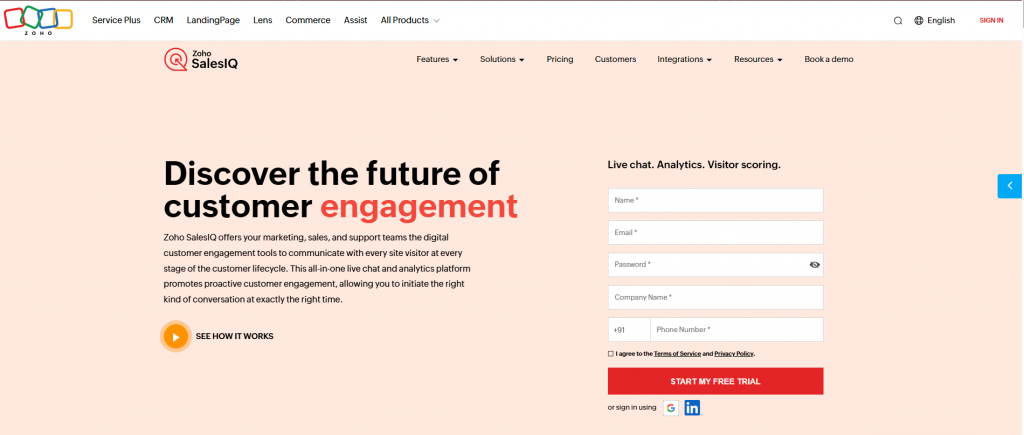
Zoho SalesIQ is part of the broader Zoho ecosystem, making it a natural choice for businesses already using Zoho CRM. It combines chatbot automation with visitor tracking and real-time analytics.

Choosing the right chatbot depends on how quickly it can be deployed, the engagement tools it offers, and whether it fits your business model. The table below provides a side-by-side view to help you evaluate each option.
| Chatbot | Core Strength | Setup Speed | Engagement Features | Best Suited For |
|---|---|---|---|---|
| YourGPT | All-in-one AI automation | ★★★★★ | Voice, omnichannel, advanced flows | Businesses needing a unified solution across support, sales, and ops |
| Intercom | Customer lifecycle management | ★★★★☆ | Personalized messaging, retention tools | SaaS companies and subscription-driven businesses |
| ManyChat | Social-first and ecommerce | ★★★★☆ | Messenger, Instagram, website bots | Ecommerce brands connecting social and web traffic |
| Landbot | Funnel-driven conversations | ★★★★☆ | Visual flow builder, lead capture | Businesses focused on lead generation and qualification |
| Zendesk | Enterprise support automation | ★★★★☆ | Ticketing workflows, knowledge base | Enterprises with high-volume customer support |
| Freshchat | SMB-friendly live + AI chat | ★★★★★ | Templates, proactive triggers, multichannel | Startups and SMBs needing quick, affordable deployment |
| Zoho SalesIQ | CRM-integrated engagement | ★★★★☆ | Visitor tracking, CRM sync, lead scoring | Companies using the Zoho ecosystem |
Choosing a chatbot is not about picking the tool with the most features or the biggest brand name. The real test is whether it aligns with your website goals and improves the customer experience. A chatbot that fits your needs will boost engagement and revenue, while the wrong one can add friction and waste resources.
Here are five practical steps to guide your decision:
Before comparing platforms, be clear on what you expect the chatbot to achieve. The goal shapes every other decision.
When you know the outcome you want, it becomes easier to filter out tools that don’t match your priorities.
A chatbot’s value depends on how well it connects with your existing systems. Look for platforms that integrate smoothly with your CMS (WordPress, Shopify, Webflow, or Framer) and with backend tools like CRMs and helpdesks. The easier the integration, the faster you can see results without heavy development work.
Not all features are equally valuable. Prioritize the ones that directly affect customer engagement and revenue. Examples include:
These features turn a chatbot from a support widget into a business driver.
Instead of trying to launch a chatbot with every possible function, begin with one high-impact scenario. It could be lead capture on a SaaS site or cart recovery for an online store. Run it as a pilot, measure the results, refine the experience, and then expand gradually. This approach lowers risk and builds confidence.
As your traffic grows, the chatbot should scale with it. A reliable platform handles both quiet periods and high-volume spikes without slowing down or breaking workflows. Choosing a chatbot that can grow with your business saves you from constant switching or rebuilding later.
Chatbots have become a central part of how websites interact with visitors and turn them into customers. They make it easier for people to get quick answers, reduce friction during key moments, and support businesses in capturing more value from every interaction.
Their role is set to grow even further. Chatbots are moving beyond reactive support and transforming into intelligent systems that guide the entire customer journey.
Here are the directions businesses should prepare for:
Today’s chatbots mostly answer questions or pass users to human agents. The next wave will go further, taking direct action on behalf of the customer.
Imagine a chatbot that not only explains return policies but also initiates a refund, updates an order, or books an appointment. This evolution turns the chatbot into a true AI agent that delivers end-to-end service without handoffs, reducing friction for both customers and teams.
While most website chatbots today are text-first, voice is becoming a natural expectation. As smart speakers and mobile voice assistants grow, customers will want to interact with websites by speaking instead of typing.
Voice-enabled AI will provide faster support, improve accessibility, and make complex tasks simpler on mobile. For businesses, this creates an opportunity to reach users who prefer conversation over clicks.
Basic personalization such as greeting users by name will no longer be enough. Future chatbots will combine real-time browsing data, past purchases, and predictive modeling to anticipate needs before they are expressed without a complex setup.
An e-commerce chatbot could, for example, suggest restocking a skincare product a week before it typically runs out. This shift from reactive support to predictive engagement will make websites feel more like personal assistants than static storefronts.
As AR and VR become more common, websites will no longer be flat pages. Customers will shop in virtual stores, try products in 3D, or attend interactive showrooms. Chatbots will also embed within these environments, answering questions, assisting with product comparisons, and guiding users through immersive checkouts. For businesses, this means chatbots will not just sit in a corner widget but become central to future shopping experiences.
A chatbot helps visitors get instant answers. It keeps them engaged, reduces wait times, and increases the chance they complete a purchase.
Yes. By guiding customers through checkout, suggesting products, and reminding them about abandoned carts, chatbots can directly increase sales.
Most chatbots can be added in minutes with a plugin or a short code. Advanced setups that connect to CRMs or other tools may take a few hours.
No. Many platforms have drag-and-drop builders that make setup simple. Developers can add custom features if your business needs them.
Yes, as long as you choose a trusted provider. Leading platforms use encryption and follow data privacy laws such as GDPR and CCPA.
Yes. Many modern chatbots translate conversations in real time and support more than 100 languages, making it easier to serve global audiences.
Look for natural language understanding, easy integrations, proactive prompts, strong analytics, and the ability to scale as your business grows.
If you get frequent customer questions, have a lot of visitors leaving without buying, or serve customers across time zones, a chatbot can help.
No. Chatbots are best at repetitive tasks. Human agents are still needed for complex or sensitive conversations. The best setup uses both together.
Ecommerce, SaaS, travel, healthcare, and banking all see strong results. Any business that needs to handle customer questions quickly can benefit.
Chatbots have moved from optional add-ons to becoming a core part of modern websites. They improve customer experience by providing instant answers, reducing friction in the buying journey, and capturing opportunities that would otherwise be lost.
The value of a chatbot depends on the business model. Ecommerce brands rely on chatbots to recover abandoned carts and recommend products. SaaS companies use them to qualify leads and guide new users through onboarding. Service providers gain round-the-clock availability and multilingual support that extends reach to global audiences.
Looking ahead, the potential is even greater. Chatbots are evolving into intelligent agents capable of handling payments, personalising interactions in real time, and supporting new channels such as voice, augmented reality, and virtual reality. Choosing the right platform today is not only about addressing current needs. It is about preparing your business to deliver richer, smarter, and more connected customer experiences in the future.
Choose a chatbot that fits your business goals. Compare top platforms for 2025 and start creating better conversations that engage visitors, capture leads, and drive sales.
7-day free access • No credit card required • Works with Framer
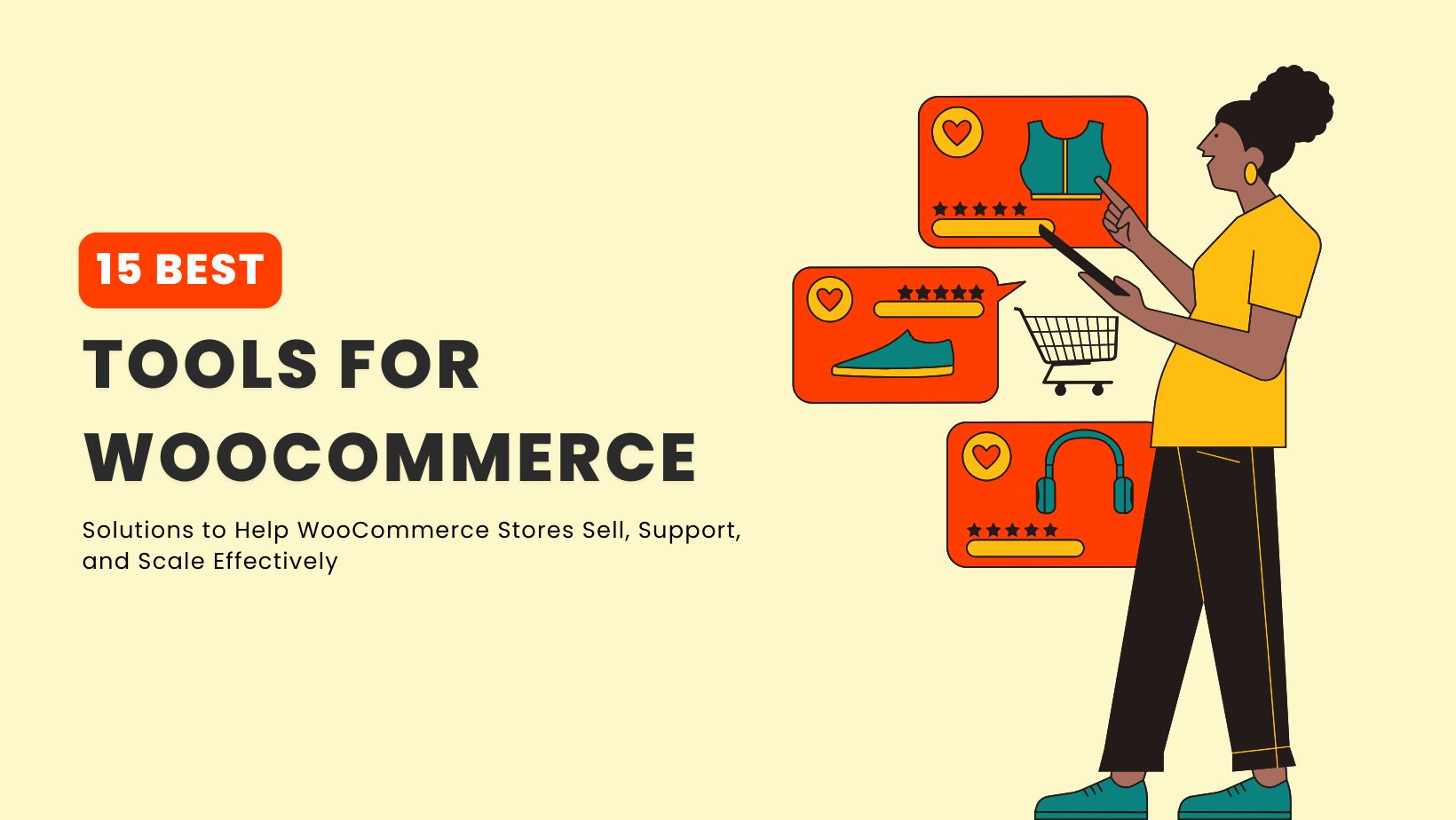
WooCommerce gives store owners flexibility, but that flexibility comes with trade-offs as a store grows. Over time, pages slow down as plugins accumulate, carts get abandoned without obvious reasons, and customer questions start consuming more time than expected. These issues rarely appear all at once, but they compound quickly and directly affect revenue. After working […]

AI customer support tools now form a core part of how many teams handle growing contact volumes and rising customer expectations. At the same time, the market has become crowded, with many similar-looking products and overlapping claims, which makes evaluation harder for support leaders. The AI customer service segment grew from about $12 billion in […]

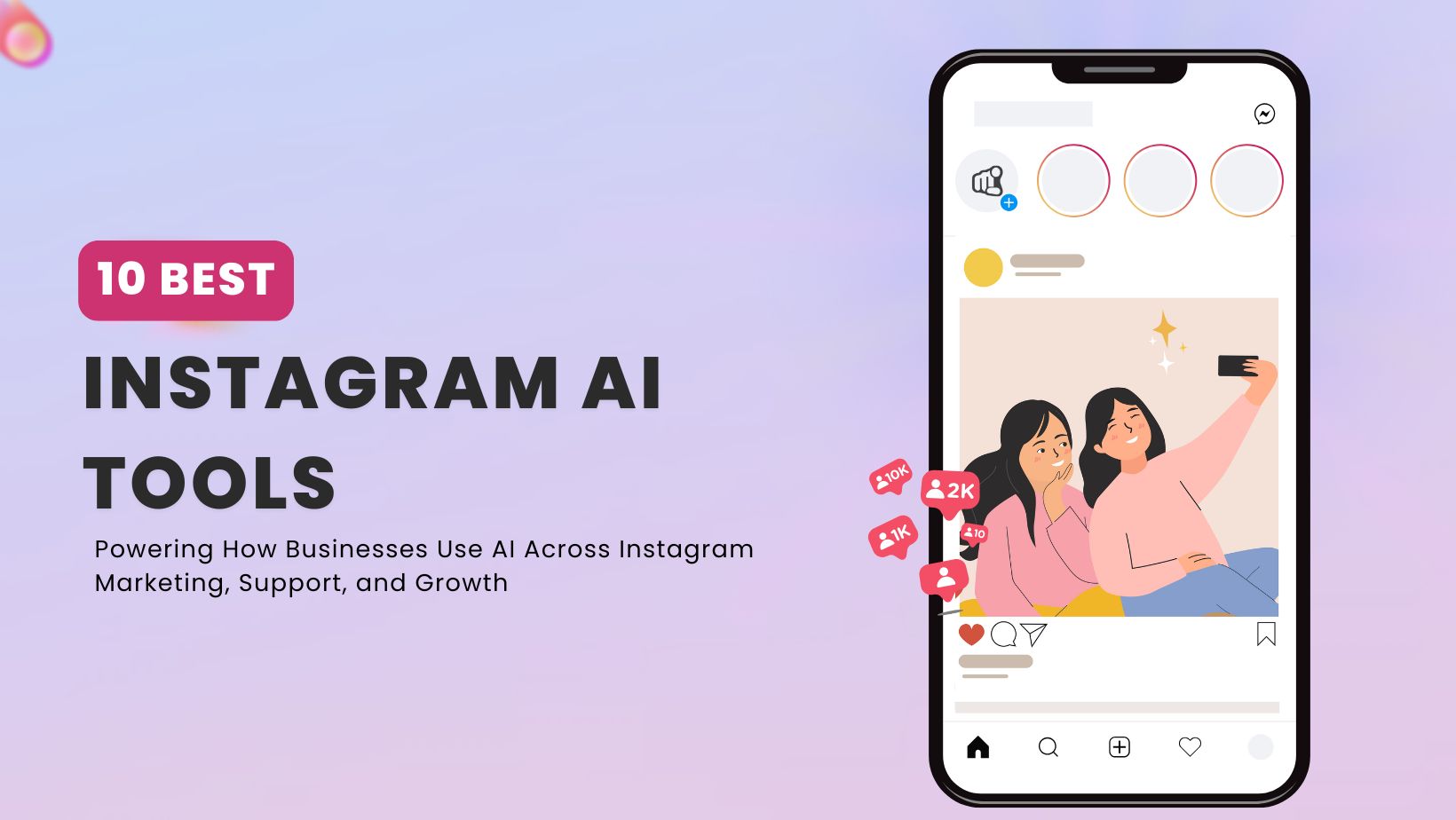
If you run an Instagram account for business in 2026, you already feel the pressure. The platform has 2 billion monthly users now. About 44% of people on Instagram shop every week, and most expect you to reply to their messages in under an hour. Between creating posts, Stories, and Reels, answering DMs, responding to […]

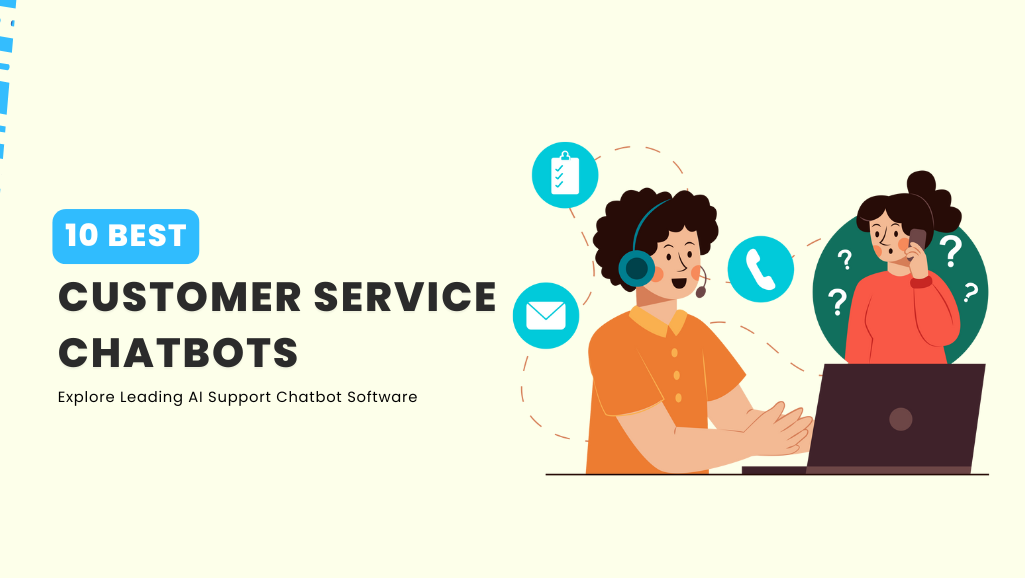
A customer sends an urgent question while your support team is offline. The delayed reply leads to frustration, and a small issue becomes a poor experience. This happens daily for businesses that cannot offer consistent, real-time support. AI chatbots help solve this. They respond instantly, understand context, guide customers through solutions, and transfer complex issues […]


LiveChat is a customer messaging platform that has helped many teams handle customer questions through basic chat widgets, but the way businesses support customers has changed. People now expect quick answers across more channels, and support teams want tools that cut down on repetitive work instead of adding to it. As a result, many companies […]

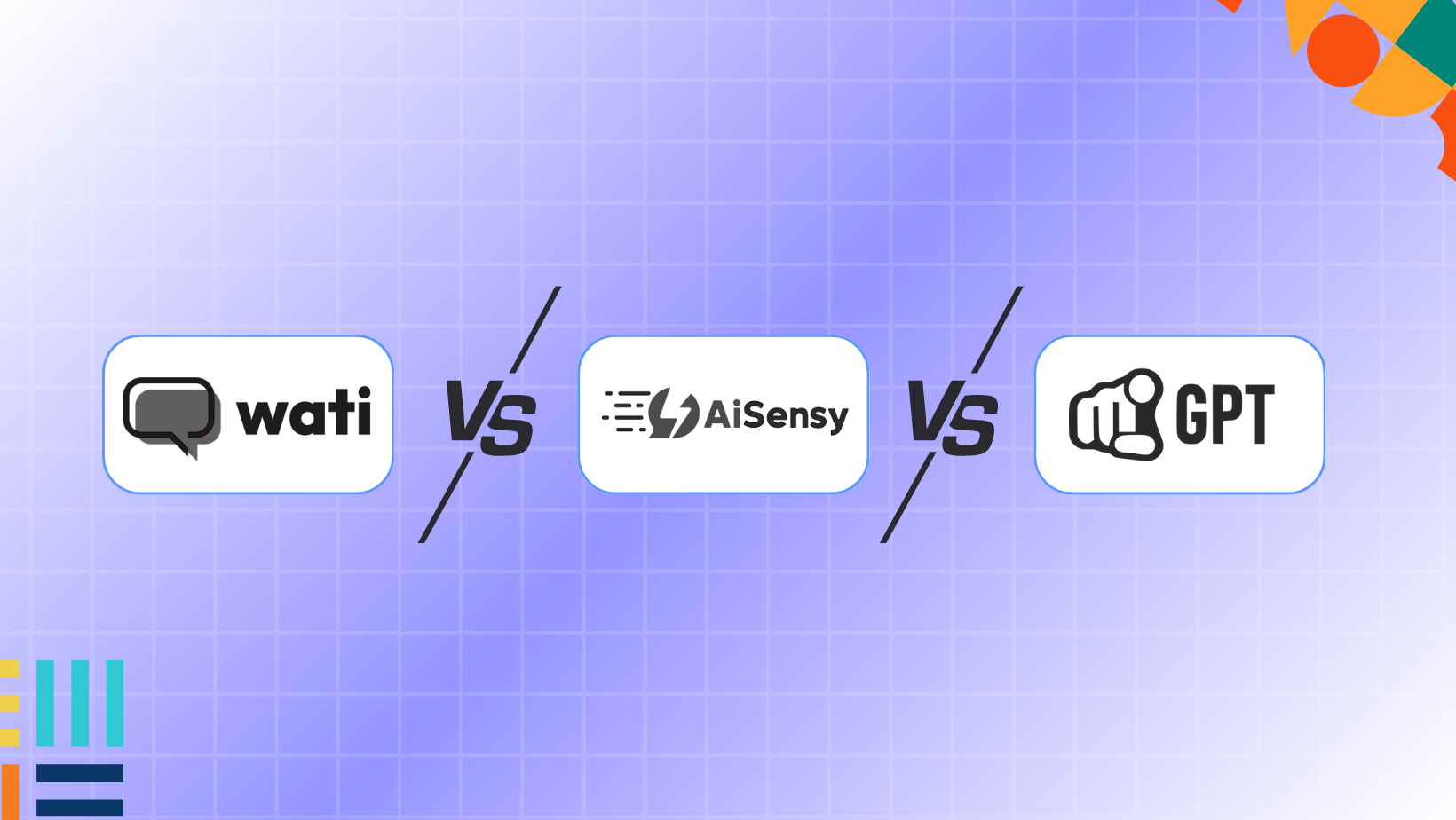
TL;DR Wati manages WhatsApp teams and shared inbox. AiSensy runs broadcast campaigns and drip sequences. YourGPT trains on your business data and executes real-time actions across multiple channels. WhatsApp and Instagram DMs now handle the majority of customer conversations for growing brands in 2025. What starts as 20-30 messages per day quickly scales to hundreds […]
